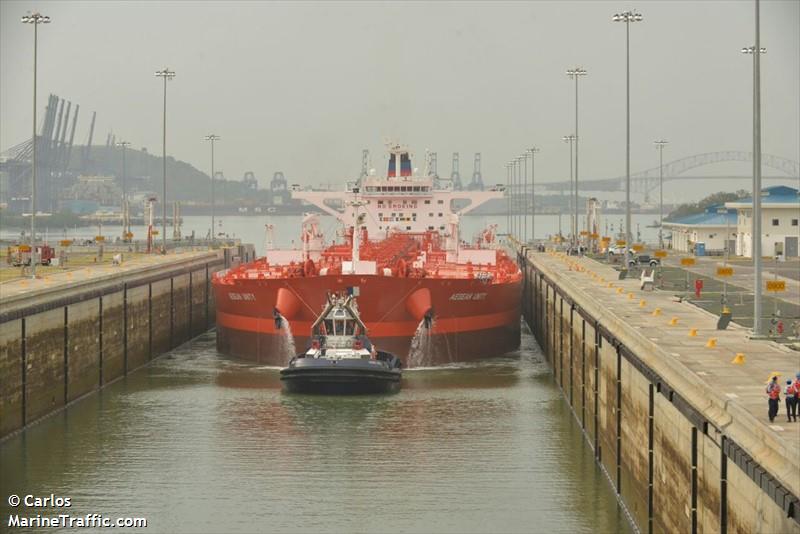As it nudged its way out of the Lago de Miraflores and into the lush green heart of Panama on Thursday, the Aegean Unity, a Greek-flagged supertanker, must have looked an ordinary enough sight to the casual observer.
However, the passage of the vessel, carrying a cargo of 700,000 barrels of Ecuadorean crude oil into the Panama Canal, marked a historic moment for global trade.
The Aegean Unity was the first giant Suezmax-class tanker to pass through the canal in its 102-year history, after a $5 billion expansion project that was completed six weeks ago.
When French and American engineers carved the canal out of the jungle an estimated 25,000 workers died during its construction — mostly from tropical diseases such as yellow fever and malaria.
The spiralling cost of the project pushed its original French backer into bankruptcy. But for all of their efforts, the canal’s original developer simply never imagined the huge scale of the megaships to come.
Until now, the Panama Canal, which opened in August 1914, has been too small to accommodate the giant oil tankers and cargo ships that now ply the seas.
Its locks allowed only ships with about 5,000 containers to squeeze through, creating a pinch-point in global shipping with far-reaching implications.
Because bigger, so-called post-Panamax ships are far cheaper to operate, much of the busy trade between Asia and the US east coast has been funnelled via Egypt’s deeper and wider Suez Canal — even though the journey is considerably longer — or via ports on the west coast of America, where cargos finish their journey expensively by rail or road.

The expansion of the Panama Canal is set to have a significant impact. Now with deeper and wider locks enabling the passage of huge vessels carrying as many as 13,000 containers or up to a million barrels of crude oil, the canal has more or less doubled its capacity.
Of course, that will trigger a windfall for Panama, which can charge as much as $300,000 for a one-way trip.
It is expecting a surge in the number of vessels using the canal, from 960 million cubic metres last year to as many as 1.7 billion cubic metres, generating billions of dollars in revenue.
But it will also drive down the cost of freight globally and help to revitalise ageing US ports such as Baltimore and New York, which are enlarging their terminals and shipping lanes.
Most important, the expansion will open up new and hitherto underdeveloped trade routes. Among the most valuable of these is likely to be the growing trade in US shale gas to China and other energy-hungry economies in the Far East.
For the first time, vessels carrying liquefied natural gas from America’s shale beds in Pennsylvania and Texas will be able to pass through the locks, bound for Asia.
They are expected to account for 20 per cent of the canal’s cargo by volume by 2020 — good news for US frackers, which are struggling with low oil prices but which now stand to benefit from lower export costs.
There are geopolitical implications too. The expanded Panama Canal will reduce the reliance of the world’s two biggest economies — the US and China — on the Suez Canal and, in turn, the Middle East.
That trend could intensify if one Hong Kong-led consortium succeeds in its ambitious aim. It has launched a $40 billion project to build a longer, rival canal through Nicaragua. That would be one of the biggest infrastructure projects ever attempted.
If it works, even more of the world’s trade is likely to be channelled away from Suez and through Central America.
